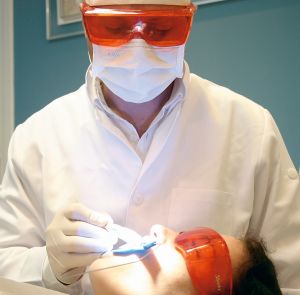Dentist Salary
The average dentist salary as of 2009, according to the ADA, was just over $192,0001 per year for general dentists and $305,8201 for specialists in private practice. Of the 186,0842 dentists employed in the US, over half were self-employed and not incorporated. Almost all worked in a private practice setting. According to ADA, 7% of dentists in private practice are sole proprietors, while 14% belong to a partnership. A few worked in hospitals and the offices of other healthcare practitioners (dentists, doctors, etc.), while others worked in places which offered the best salaries.
About one third of dentists were self-employed and not incorporated. Almost all worked in a private practice. According to ADA, 7% of dentists in private practice are sole proprietors, while 14% belong to a partnership. A few salaried dentists work in hospitals and offices of physicians.
Most dentists are general practitioners who treat a variety of dental problems. Other dentists practice in any of nine specialty areas: orthodontia, oral surgery, pediatrics, periodontics, prosthodontics, endodontics, public health, oral pathology and oral/maxillofacial radiology. In 2010, dentists held about 156,0006 jobs with employment being distributed as follows:
| Dentists, General | 130,700 |
| Oral and Maxillofacial Surgeons | 8,000 |
| Orthodontists | 8,300 |
| Prosthodontists | 1,000 |
| Dentists, All Other Specialists | 7,800 |
The US Bureau of Labor Statistics reports that, as of May 2010, there were about 155,7003 dentists working with a median dentist salary of $146,9204. Assuming that a dentist worked on average, 40 hours per week, the hourly median wage was $70.64. The lowest 10% of dentists earned less than $71,210 per year, while the upper 10% earned more than $166,0005. The median annual wages broken down by dental specialty were as follows:
-
Equal to or greater than $166,400 for oral and maxillofacial surgeons
Equal to or greater than $166,400 for orthodontists
$161,020 for dentists, all other specialists
$141,040 for general dentists
$118,400 for prosthodontists
Demand for dental care should grow substantially through the year 2020. As members of the baby-boom generation advance into middle age, a large number will need complicated dental work, such as bridges. In addition, elderly individuals, who are more likely to retain their natural teeth, will need preventive services, as well as, maintenance on existing dental work. The younger generation will continue to need preventive checkups.
While employment of dentists is not expected to grow as rapidly as the demand for dental services, (as their practices expand, dentists are likely to hire more dental hygienists and dental assistants to handle routine services), job opportunities will result from the need to replace the number of dentists expected to retire within the next 20 years. This will create a need for new dentists in the areas of private practice, research and teaching and in public health dentistry.
 |
Dentist Salary Sources:
1, 2 www.ada.org
3, 4, 5, 6 Bureau of Labor Statistics, U.S. Department of Labor, Occupational Outlook Handbook, 2012-13 Edition, Dentists, http://www.bls.gov/ooh/healthcare/dentists.htm (8/1/12).
